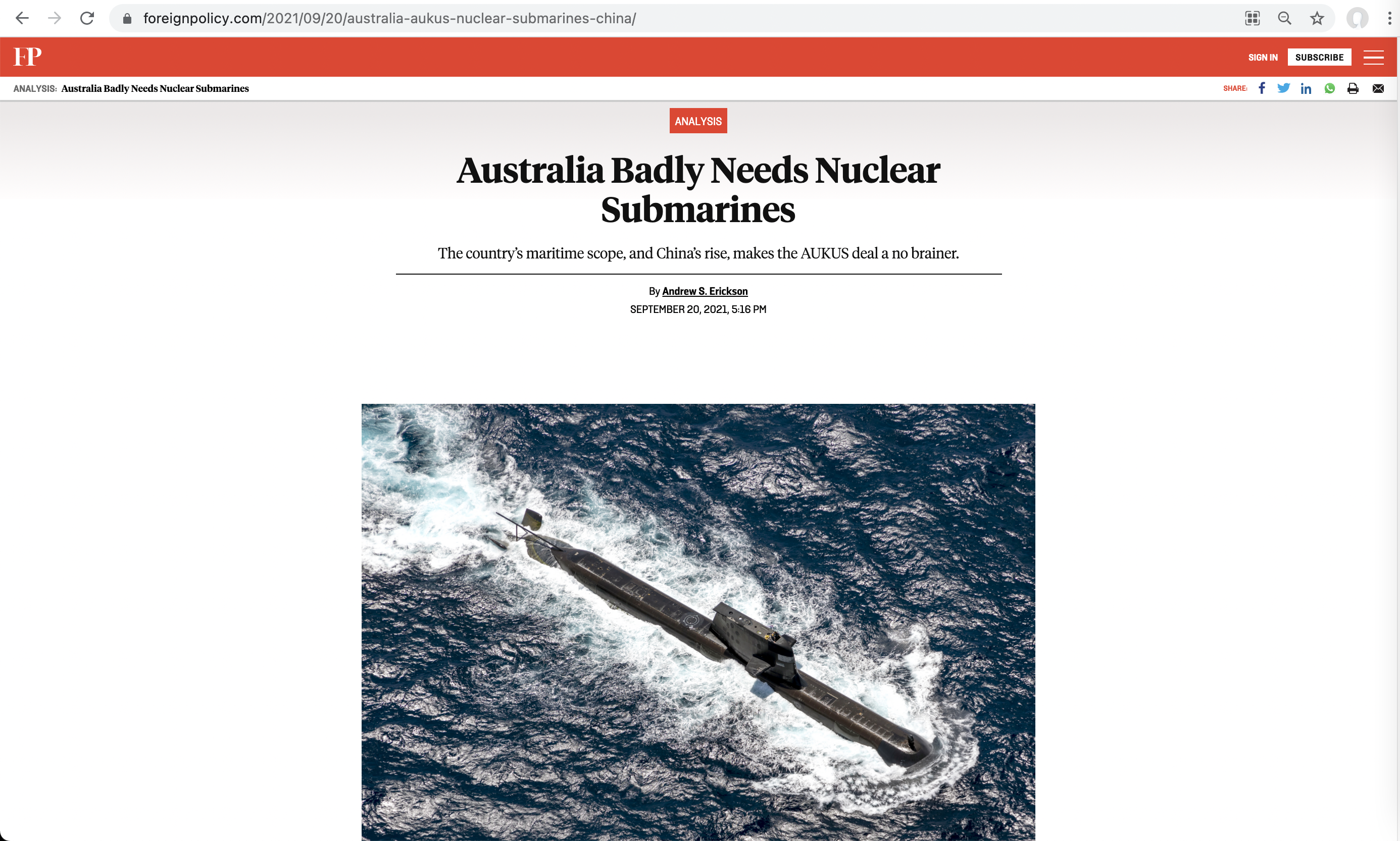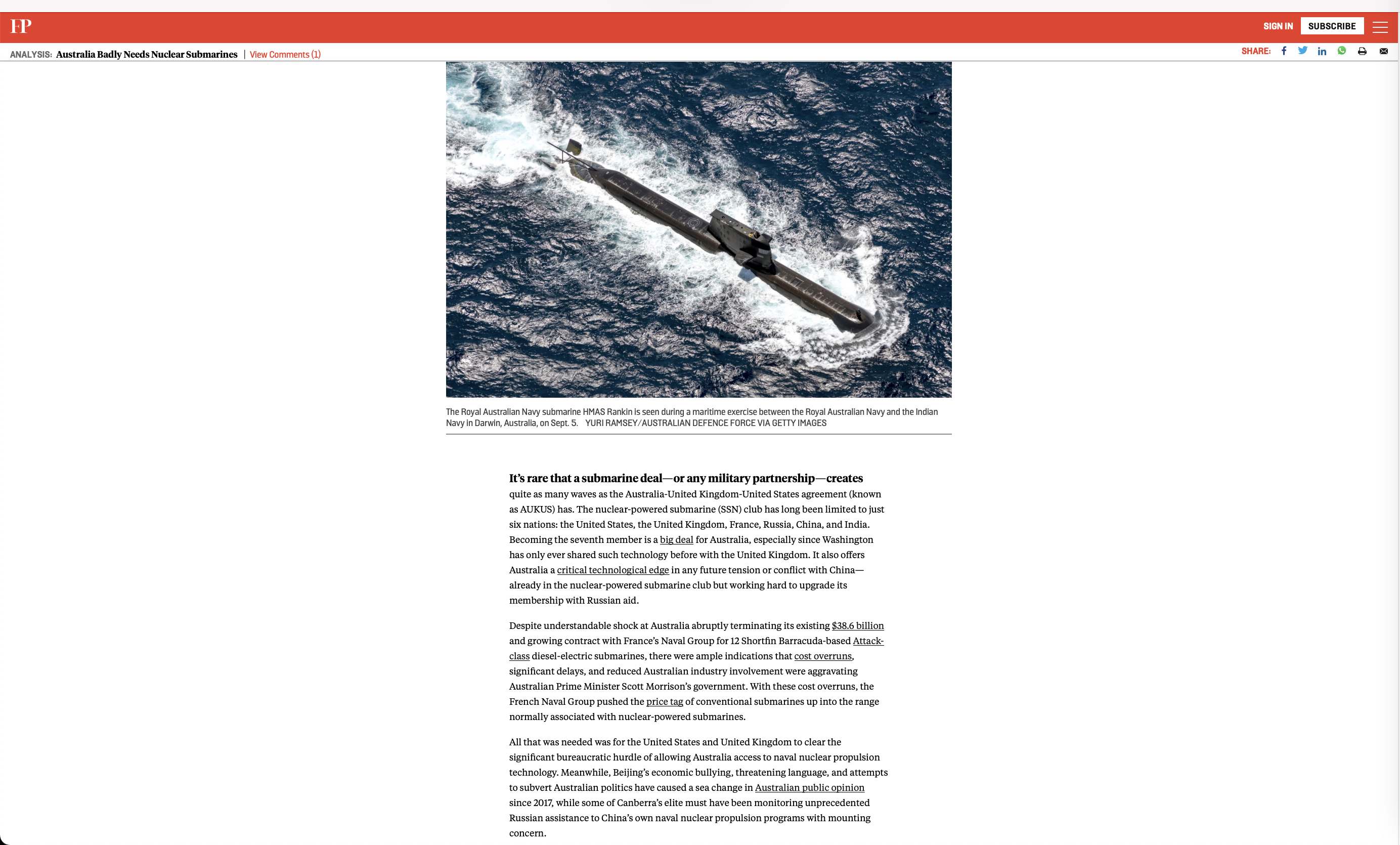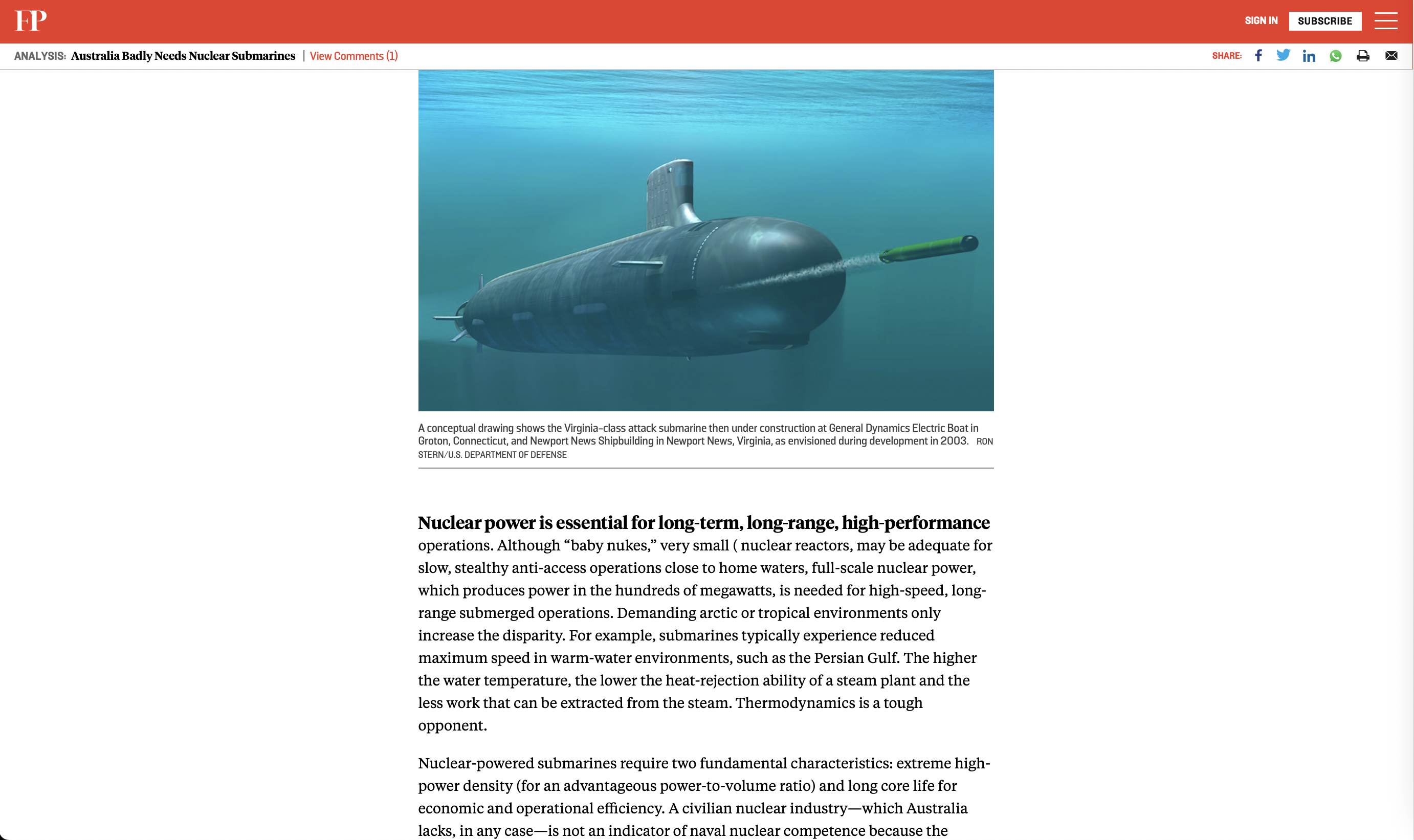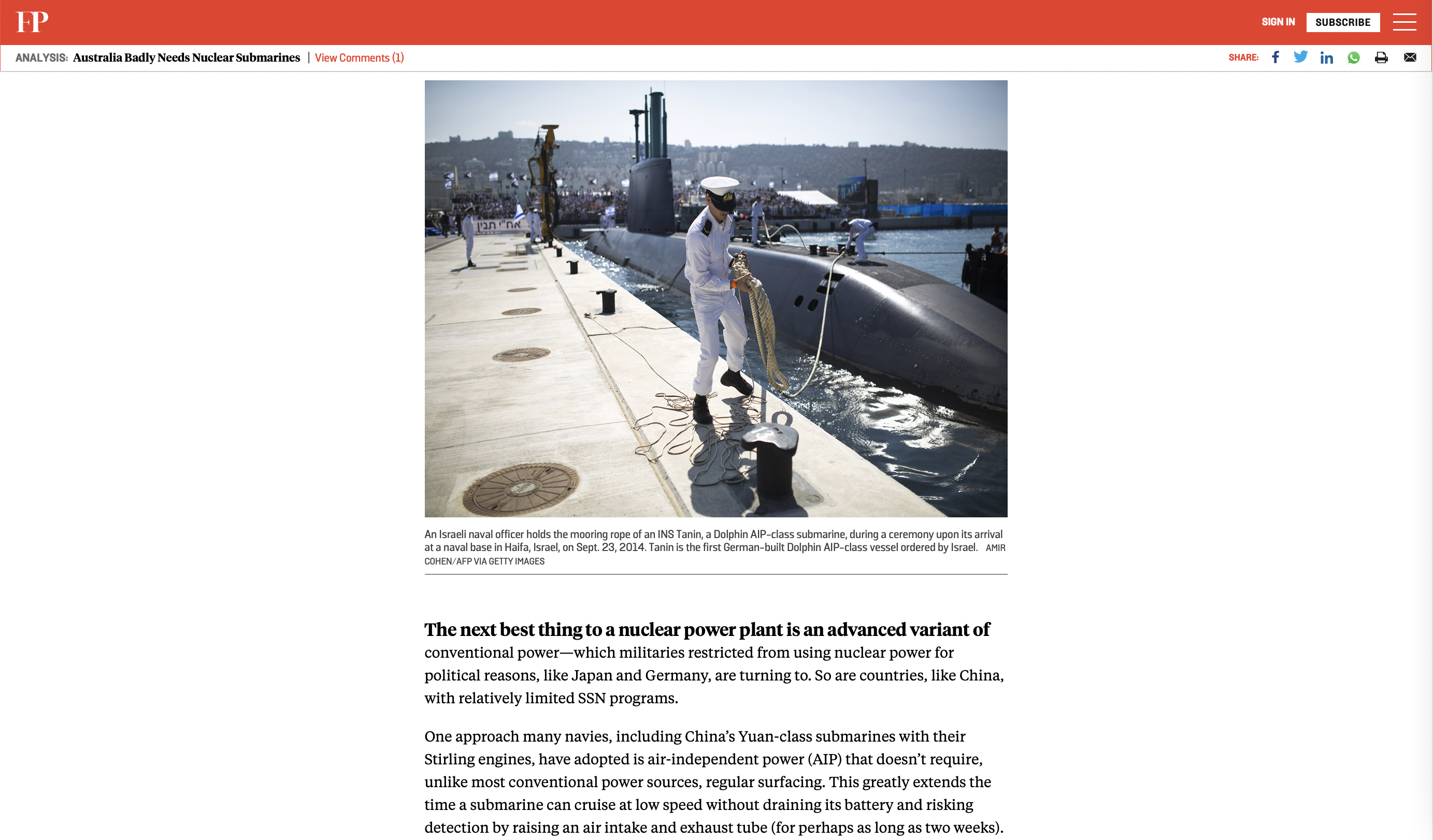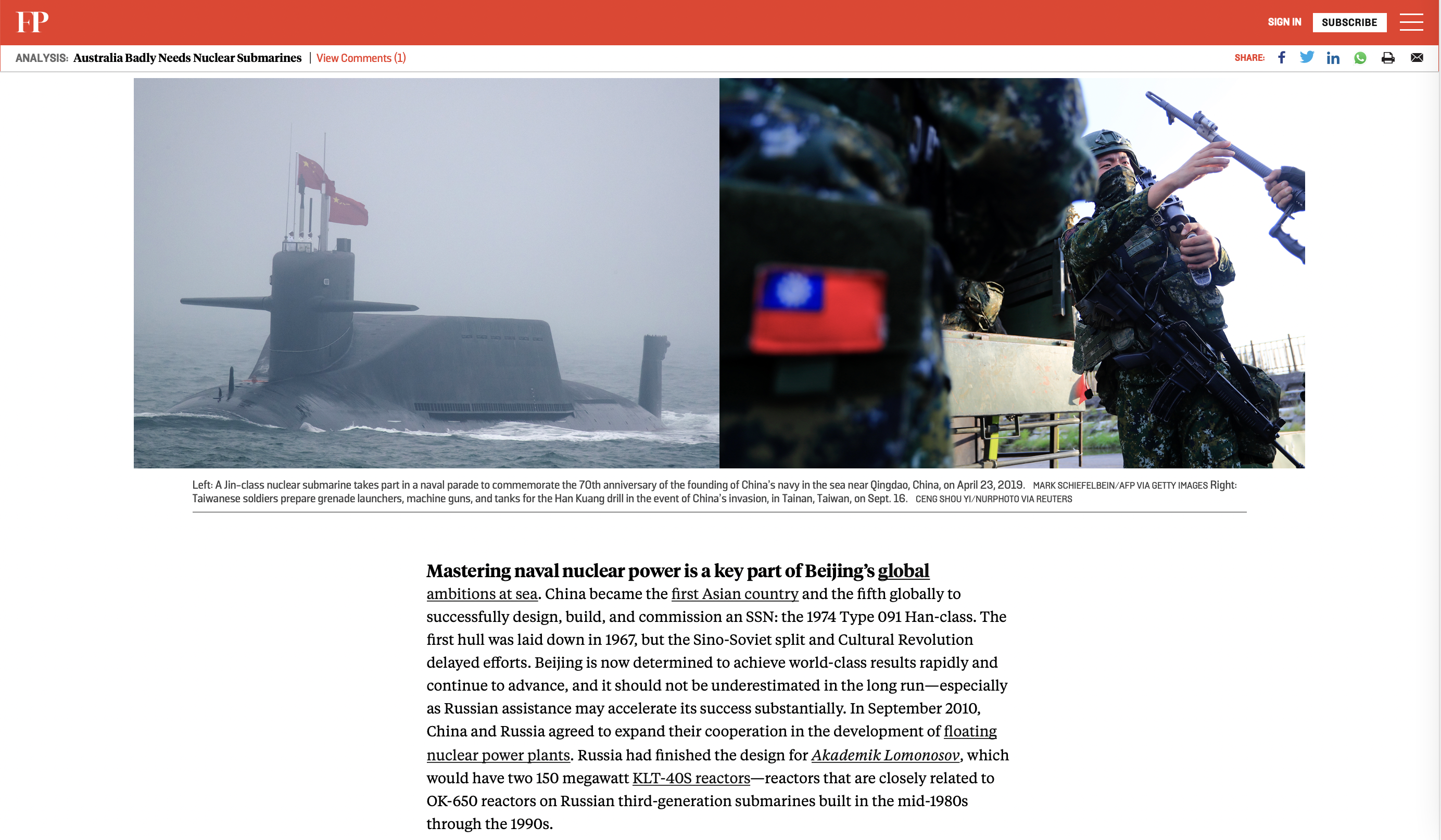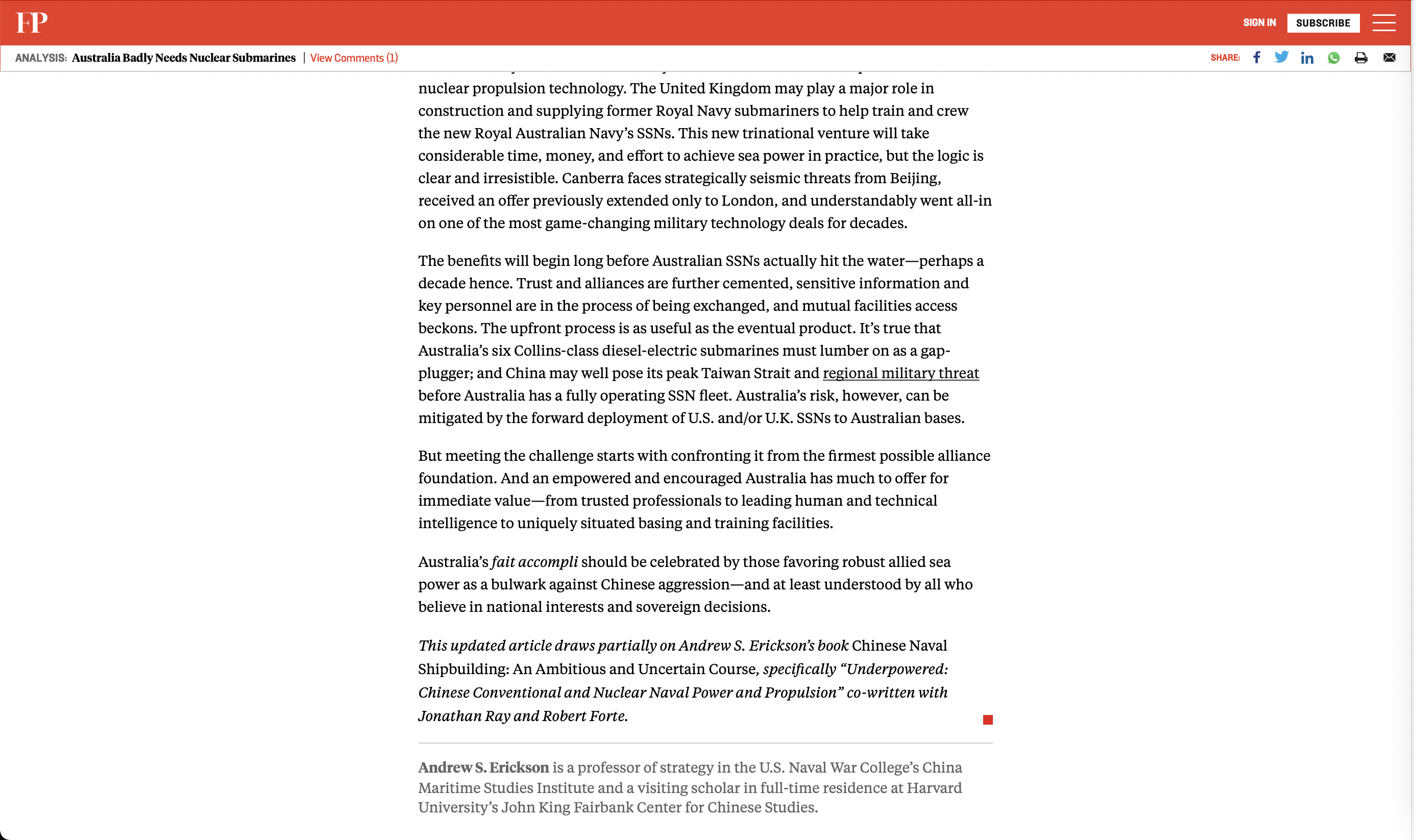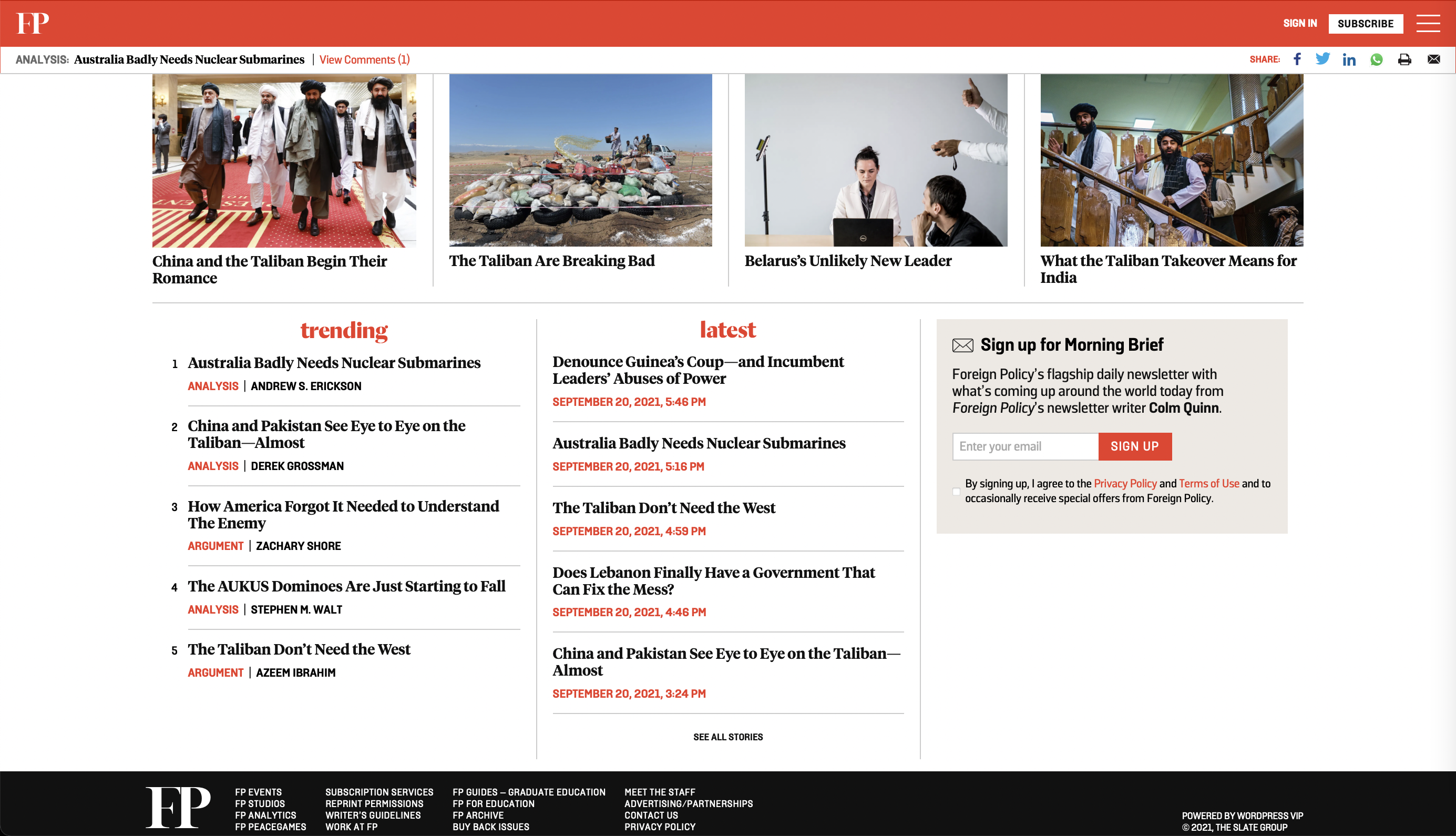Australia Badly Needs Nuclear Submarines: AUKUS Nuclear Submarine Deal Is a Massive Boost for Australia’s Navy
Andrew S. Erickson, “Australia Badly Needs Nuclear Submarines: AUKUS Nuclear Submarine Deal Is a Massive Boost for Australia’s Navy,” Foreign Policy, 20 September 2021.
The country’s maritime scope, and China’s rise, makes the AUKUS deal a no brainer.
It’s rare that a submarine deal—or any military partnership—creates quite as many waves as the Australia-United Kingdom-United States agreement (known as AUKUS) has. The nuclear-powered submarine (SSN) club has long been limited to just six nations: the United States, the United Kingdom, France, Russia, China, and India. Becoming the seventh member is a big deal for Australia, especially since Washington has only ever shared such technology before with the United Kingdom. It also offers Australia a critical technological edge in any future tension or conflict with China—already in the nuclear-powered submarine club but working hard to upgrade its membership with Russian aid.
Despite understandable shock at Australia abruptly terminating its existing $38.6 billion and growing contract with France’s Naval Group for 12 Shortfin Barracuda-based Attack-class diesel-electric submarines, there were ample indications that cost overruns, significant delays, and reduced Australian industry involvement were aggravating Australian Prime Minister Scott Morrison’s government. With these cost overruns, the French Naval Group pushed the price tag of conventional submarines up into the range normally associated with nuclear-powered submarines.
All that was needed was for the United States and United Kingdom to clear the significant bureaucratic hurdle of allowing Australia access to naval nuclear propulsion technology. Meanwhile, Beijing’s economic bullying, threatening language, and attempts to subvert Australian politics have caused a sea change in Australian public opinion since 2017, while some of Canberra’s elite must have been monitoring unprecedented Russian assistance to China’s own naval nuclear propulsion programs with mounting concern.
The politics are messy, but the reasons why countries want to be in the nuclear-powered submarine club are crystal clear. Power and endurance, both for propulsion and the need to supply electrical power for onboard systems, are critical to any navy—and nuclear power is simply the best option. Even the French deal was done on the premise that the submarines could eventually be converted to nuclear propulsion.
Propulsion determines how fast and far a ship can go; overall power determines what it can accomplish in a given location. The density of seawater (around 805 times greater than air) imposes an unforgiving reality on these dynamics: the cubic relationship between power and speed. For a ship to go two times faster, eight times the power is needed; three times faster requires 27 times the power. Long-submerged endurance requires considerable electrical power for heating/cooling, ventilation, and atmosphere control to keep the crew healthy—not to mention offering conditions favoring recruitment and retention. Lastly, advanced submarine tactical systems require high and growing amounts of power to operate and cool their associated sensors and combat systems.
Australia’s submarine force has been trying to cover vast distances for years using only conventional propulsion techniques. The continent-sized island has the world’s third largest exclusive economic zone—and the other four nations in the top five are SSN powers already. … … …

